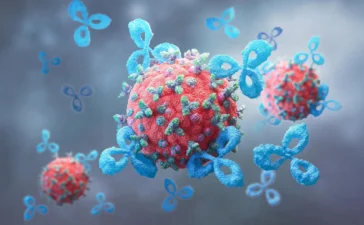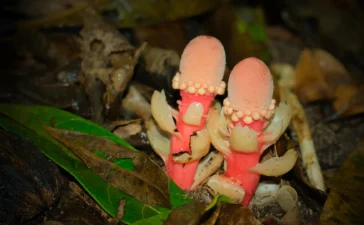Building a robot takes time, technical skill, the right materials — and sometimes, a little fungus.
In creating a pair of new robots, Cornell University researchers cultivated an unlikely component, one found on the forest floor: fungal mycelia. By harnessing mycelia’s innate electrical signals, the researchers discovered a new way of controlling “biohybrid” robots that can potentially react to their environment better than their purely synthetic counterparts.
The team’s paper published in Science Robotics. The lead author is Anand Mishra, a research associate in the Organic Robotics Lab led by Rob Shepherd, professor of mechanical and aerospace engineering at Cornell University, and the paper’s senior author.
“This paper is the first of many that will use the fungal kingdom to provide environmental sensing and command signals to robots to improve their levels of autonomy,” Shepherd said. “By growing mycelium into the electronics of a robot, we were able to allow the biohybrid machine to sense and respond to the environment. In this case we used light as the input, but in the future it will be chemical. The potential for future robots could be to sense soil chemistry in row crops and decide when to add more fertilizer, for example, perhaps mitigating downstream effects of agriculture like harmful algal blooms.”
Mycelia are the underground vegetative part of mushrooms. They have the ability to sense chemical and biological signals and respond to multiple inputs.
“Living systems respond to touch, they respond to light, they respond to heat, they respond to even some unknowns, like signals,” Mishra said. “If you wanted to build future robots, how can they work in an unexpected environment? We can leverage these living systems, and any unknown input comes in, the robot will respond to that.”
Two biohybrid robots were built: a soft robot shaped like a spider and a wheeled bot.
The robots completed three experiments. In the first, the robots walked and rolled, respectively, as a response to the natural continuous spikes in the mycelia’s signal. Then the researchers stimulated the robots with ultraviolet light, which caused them to change their gaits, demonstrating mycelia’s ability to react to their environment. In the third scenario, the researchers were able to override the mycelia’s native signal entirely.
The research was supported by the National Science Foundation (NSF) CROPPS Science and Technology Center; the U.S. Department of Agriculture’s National Institute of Food and Agriculture; and the NSF Signal in Soil program.
You Might Also Like
Eating more vitamin C can physically change your skin
Scientists at the University of Otago, Faculty of Medicine -- Christchurch Ōtautahi, have identified a direct connection between how much...
MIT scientists strip cancer of its sugar shield
A research team from MIT and Stanford University has developed a new technique designed to push the immune system to...
This “mushroom” is not a fungus, it’s a bizarre plant that breaks all the rules
In the damp shade beneath moss-covered trees, high in the mountains of Taiwan and mainland Japan or deep within the...
A quantum mystery that stumped scientists for decades is solved
A global research team led by Rice University physicist Pengcheng Dai has verified the presence of emergent photons and fractionalized...









